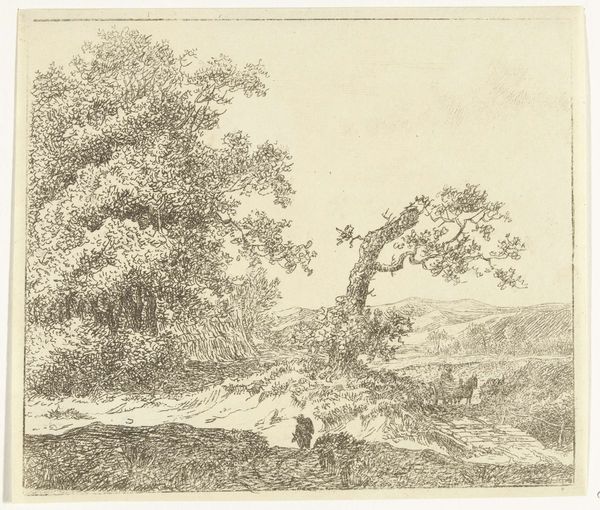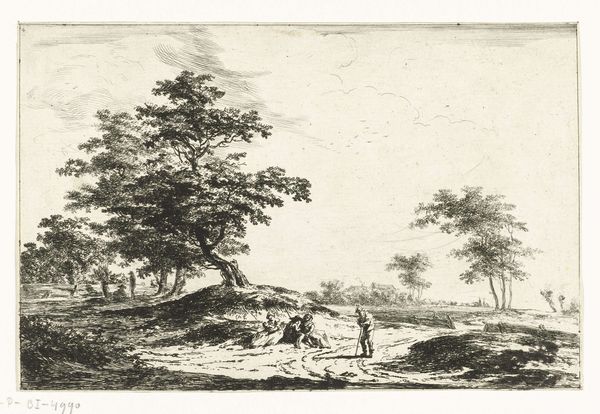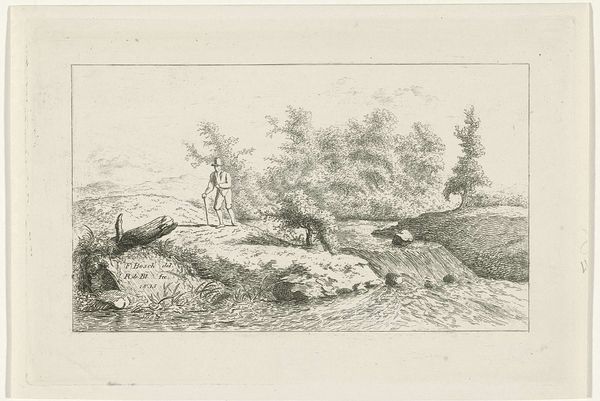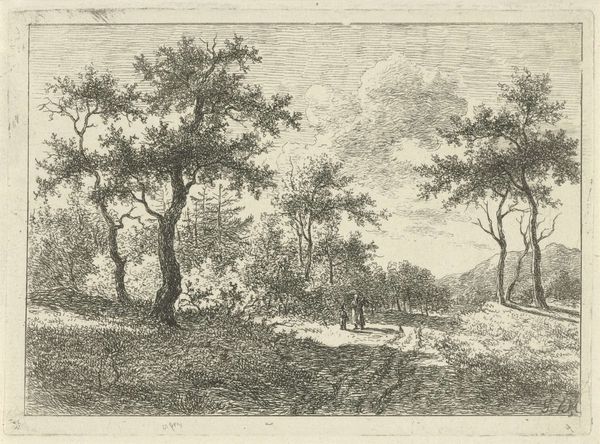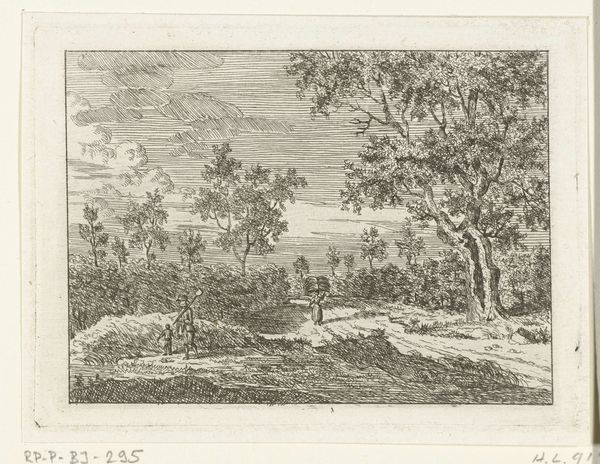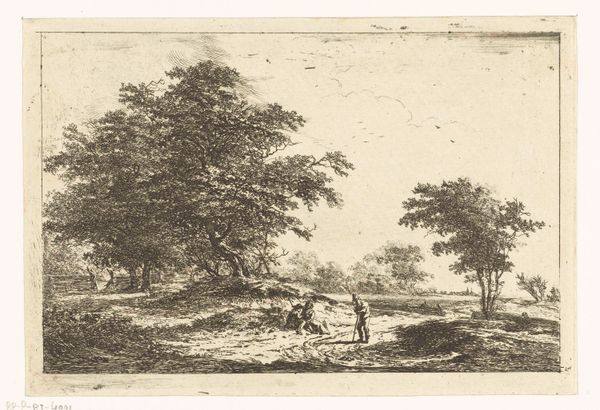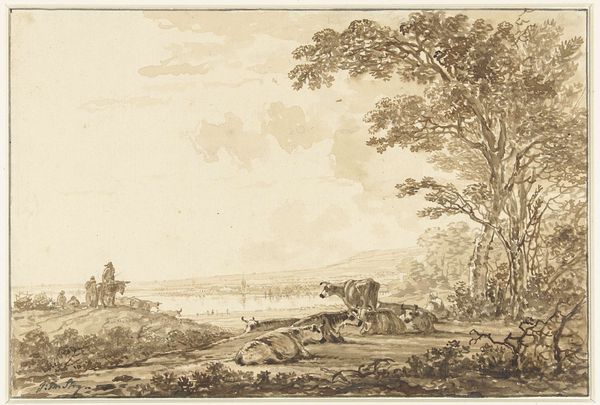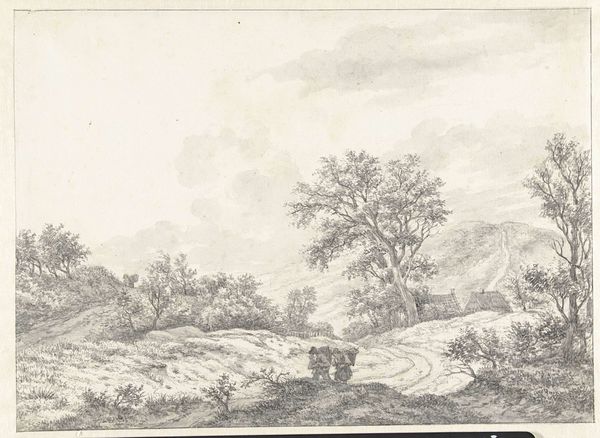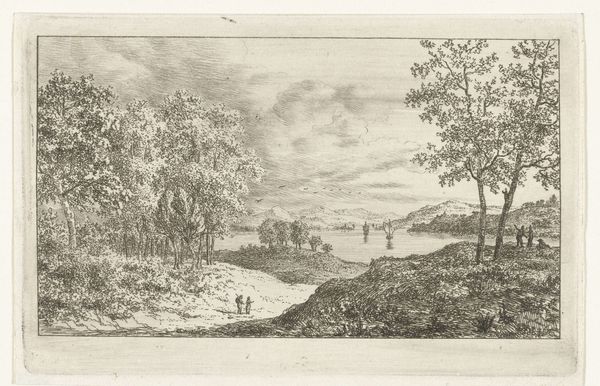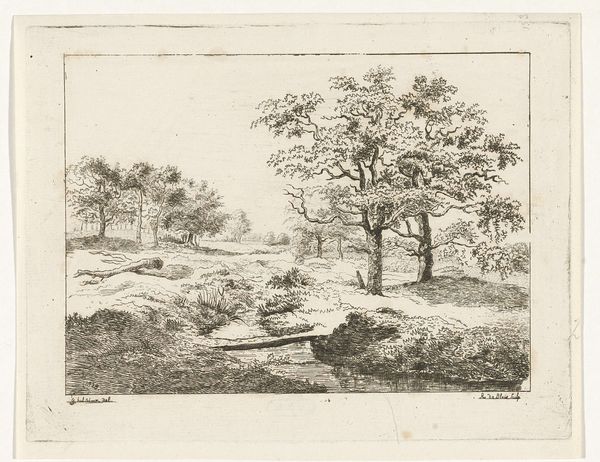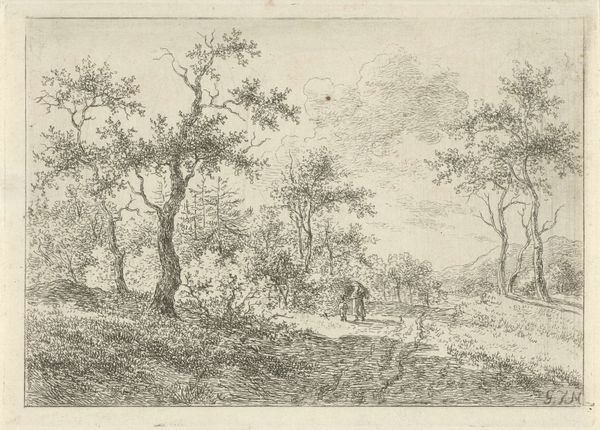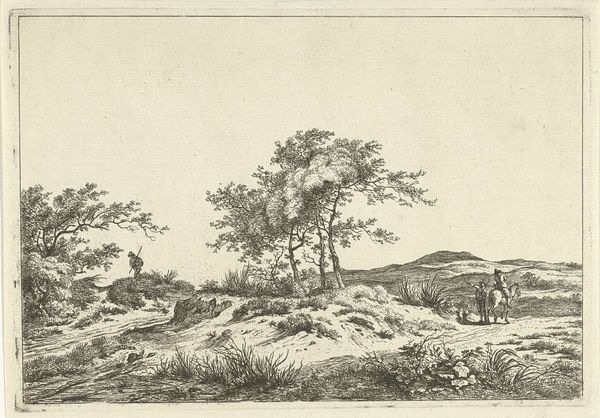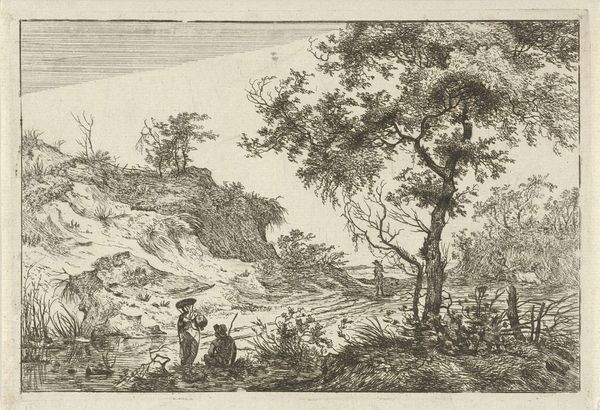
print, etching
#
dutch-golden-age
# print
#
etching
#
landscape
#
romanticism
#
line
#
realism
Dimensions: height 150 mm, width 192 mm
Copyright: Rijks Museum: Open Domain
Curator: What strikes me first is how this etching, "Cart on a Country Road by the Dunes," dating roughly 1778-1838, presents landscape through labor. Editor: I’m drawn to how detailed it is for an etching. The trees in particular are incredibly textured. How should we think about this work? Curator: Let’s consider the material reality of its creation. Etching is a reproductive medium, relying on skilled labor to transfer an image onto a metal plate, which is then used to create multiples. Who do you think consumed these prints? Editor: Perhaps a growing middle class, looking for accessible art? Was the creation of this accessible art a conscious choice, in terms of audience? Curator: Absolutely! These landscapes weren't just about aesthetic pleasure. They documented a changing countryside, often affected by land reclamation projects and agricultural shifts. This cart suggests the transport of goods, the movement of materials. Can you see a subtle form of class commentary implied? Editor: Maybe? It seems to romanticize the rural life, but your highlighting of the "transport of goods" reminds me that somebody probably isn’t happy doing that work. Are you saying it presents the idealized *and* the unglamorous realities of labor? Curator: Precisely. And consider the materials involved: the paper, the ink, the metal plate. These are commodities, tied to trade networks and economic structures. Does that influence how you interpret the "realism" of the landscape itself? Editor: I see what you mean. The seemingly objective landscape is actually a product of specific material conditions and social relationships. It shifts the emphasis from pure representation to a statement about labor. Curator: Indeed. By attending to the materials and the means of production, we see beyond the picturesque scene. Editor: This has reshaped how I perceive it; the act of etching becomes a lens to see these Dutch landscapes as reflections of their society. Thank you!
Comments
No comments
Be the first to comment and join the conversation on the ultimate creative platform.
